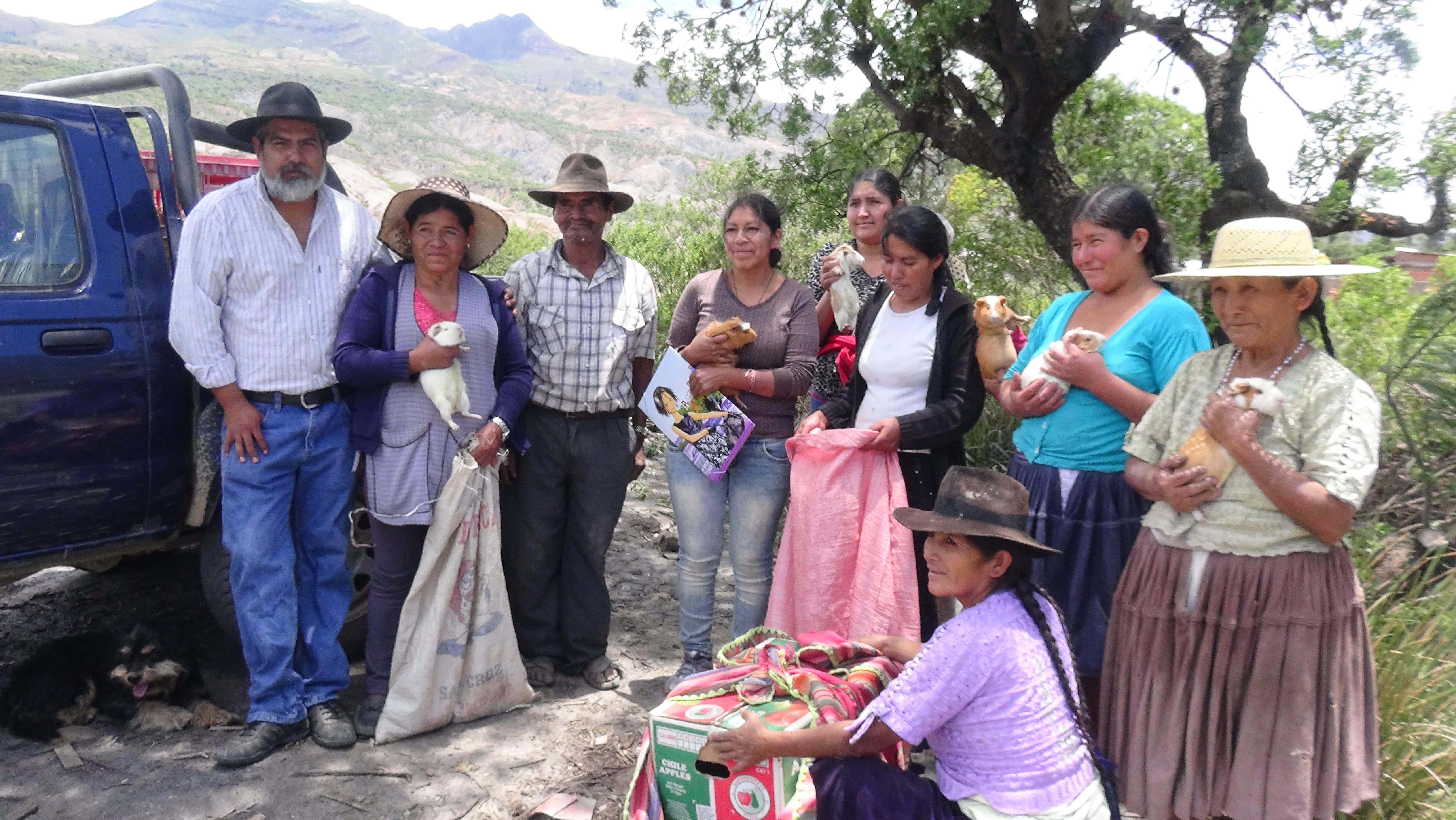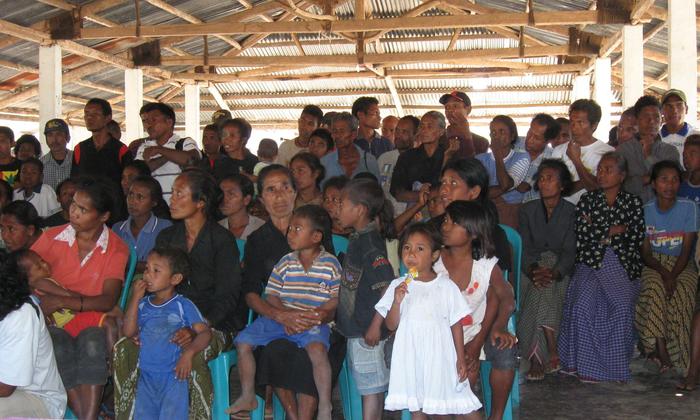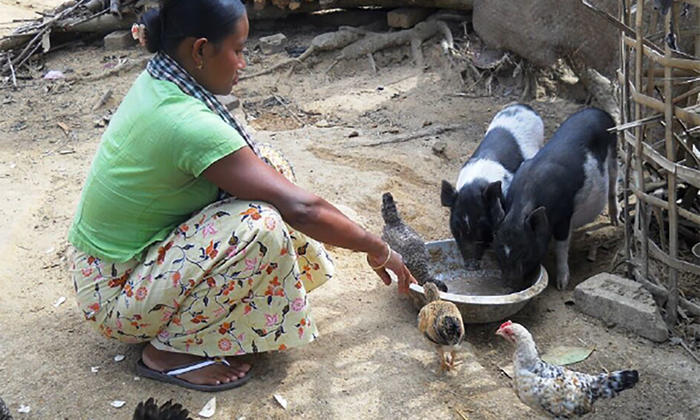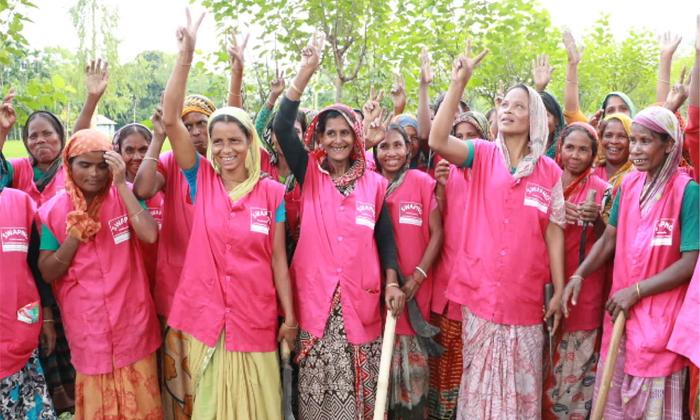The selected region, inhabited by 69,564 people, predominantly indigenous, is characterized by a cold climate, self-subsistence production systems, an almost widespread lack of water and basic services, rugged topography, arid soils and poor access to roads
Case study
Strengthening the response to malnutrition in Bolivia

SDGs ADDRESSED
This case study is based on lessons from the joint programme, Building the local response capacity for the intersectoral implementation of the PMD-C
Read more
Chapters
Project Partners






1. SUMMARY
The purpose of the intervention was to strengthen the response capacity of 22 municipalities in the departments of Cochabamba and Chuquisaca in Bolivia, in order to carry out the Bolivian Government’s Zero Malnutrition Multi-sectoral Programme (PMD-C). The Andean region of the Cochabamba department was given priority, specifically in the municipalities of Arque, Bolivar, Tacopaya, Tapacari and Sicaya, due to their high vulnerability to food insecurity. Chronic malnutrition affects four out of ten Bolivian children in rural areas of the country, which are most vulnerable to food insecurity, where minors are 2.5 times more likely to suffer from symptoms of malnutrition than in urban areas.
The program strategy consisted of 1) integrating the nutritional activities and objectives identified in previous agricultural interventions; 2) strengthening the capacities of families, farmers and municipalities through training and support of agricultural production and 3) contributing to improve the nutritional status of families, especially children under the age of five, by improving the availability and regular consumption of nutritious locally produced food. After the intervention, at least 21,489 children as well as pregnant and breast-feeding women had an improvement of availability and access to food in quality and quantity. The prevalence of chronic malnutrition in children aged 6 to 23 months was reduced by 30 per cent; the prevalence of anaemia in children of the same age was reduced by 50 per cent and by 50 per cent in women of childbearing age. The programme covered 87 communities in 22 municipalities. Furthermore, the 24 Municipal Councils for Food and Nutrition promoted intersectoral participation and coordination in the implementation of the Zero Malnutrition Multi-sectoral Programme in 1,146 communities in 24 municipalities.
The purpose of this case study is to present the lessons, results and practical examples of this experience, so that they serve to reinforce knowledge about food and nutrition security programmes.

2. THE SITUATION
Bolivia has a high prevalence of chronic malnutrition in children, especially among children under the age of five. This situation promoted a reflection of the causes and consequences of malnutrition in infancy, and the fight against malnutrition was established as a priority of the Bolivian Government. Insufficient food availability is caused by a set of interrelated causes. Agricultural production in the region has become stagnant in recent years, and therefore food availability is at risk (30 per cent of households report a shortage of food availability for more than three months of the year). Furthermore, imminent climate change affects production and food security.
What’s more, the daily diet of families in the region is based on carbohydrates (potato, chuño [traditional freeze-dried potato], maize) that, despite being the most accessible foods, do not cover the body’s nutritional requirements. Some of the factors that generate this low nutritional level are: poor knowledge on how to grow vegetables and raise small farm animals; lack of information on the nutritional value of food; cultural patterns and influence of migration, which encourage the purchase and consumption of foods with low nutritional value in protein and micronutrients (noodles, sugar, rice, etc.).
The selected region, inhabited by 69,564 people, predominantly indigenous, is characterized by a cold climate, self-subsistence production systems, an almost widespread lack of water and basic services, rugged topography, arid soils and poor access to roads. 95 per cent of the households work in agricultural activity. However, the scarcity of productive and irrigated land, together with the lack of technical advice and technology, limit production, which is lower than the national average.
For the aforementioned reasons, alternatives of crops and animal husbandry that did not require much space were introduced and that, at the same time, had optimum levels of nutrients to favour the development and good physical health and functioning, especially in the most vulnerable persons like children under the age of five, and pregnant and breast-feeding women.
3. STRATEGY
The purpose of the intervention was to strengthen the local response capacity of 22 municipalities, in the departments of Cochabamba and Chuquisaca, for the implementation of the Bolivian Government's Zero Malnutrition Multi-sectoral Programme.
The programme's strategy revolved around three concepts:

In the first stage, families with the highest biological and social risk were identified; those with at least one child under the age of five and a precarious food and nutrition situation. Subsequently, field operational activities consisted of supporting production: provision of seeds and small animals, preparation of organic fertilizers, cultivation of vegetables in gardens and solar tents, and delivery of post-harvest equipment.
Since the agricultural component is one of the fundamental pillars of the programme, an awareness-raising process was initiated by Bolivia's Food Security Support Programme’s technical team to raise awareness of the importance of working in coordination with other sectors, and in particular, to direct their actions to the achievement of results beyond the productive ones, such as improving nutrition in families. Moreover, a decision within the intervention was to not limit itself to purely productive activities but to complement them with educational activities.
The training events generated a lot of enthusiasm from the mothers for their practicality on the best ways to prepare food hygienically and knowledge on its nutritional composition. For this reason, a food preparation guide was prepared for the Andean region of Cochabamba, based on the experience of mothers who benefited and supplemented with nutritionists’ knowledge, using only local products, especially those produced in the vegetable gardens and small family farms. This guide was used so that the shared knowledge could reach more people and continue to spread. At the same time, a group of local instructors were selected and trained to continue transferring skills to families.
4. RESULTS AND IMPACT
In order to evaluate food consumption in communities, in the first stage of identifying families with the highest biological risk, 959 families were surveyed (approximately 15 per cent of the families that had been trained in nutritional food education), of which 70 per cent stated that they consumed one or more products daily from tents, vegetable gardens and small family farms.
After the intervention, a total of 7,147 families in the municipalities of Arque, Bolivar, Sicaya, Tacopaya and Tapacari had an increased availability and access to safe food of high nutritional value. They acquired knowledge in ten good food and nutrition practices, bringing about a change of attitude. As a result of the training process, it was possible to train 6,000 families and 188 community agents and mothers promoting good nutrition, as well as to develop 314 new recipes, which were gradually incorporated into the daily diet of these families.

The daily diet of families in the region is dominated by carbohydrates (potato, “chuño”, maize)
At least 21,489 children and pregnant and breast-feeding women improved the availability and access to food in quality and quantity. The prevalence of chronic malnutrition in children aged 6 to 23 months was reduced by 30 per cent, anaemia was reduced by 50 per cent in children of the same age, and the prevalence of anaemia in women of childbearing age was reduced by 50 per cent.
According to programme’s final evaluation, the effect of the productive component on beneficiary families was remarkable. Families and children over the age of six months consumed products, which improved access and consumption of a variety of plants rich in micronutrients, as well as animal protein.
The 24 Municipal Councils for Food and Nutrition promoted intersectoral participation and coordination in the implementation of the Zero Malnutrition Multi-sectoral Programme in 1,146 communities in 24 municipalities. Five associations of producers were established, who were able to produce nutritious food made from local products with the objective to include them in school meals and to promote local purchases, improving the producers’ incomes. The programme contributed to strengthening the ability of municipal authorities and local stakeholders of 24 municipalities for the development of legislative and management authorities that guarantee the sustainability of actions in the fight against malnutrition. The main purpose was to strengthen the Municipal Councils for Food and Nutrition, which assumed the leading role of articulating and coordinating multisectoral activities in the programme. The work of the Bolivian Association of Councilwomen (ACOBOL), reflected in strengthening the capacities of authorities committed to the objectives of the Zero Malnutrition Multi-sectoral Programme was fundamental. Technical assistance was also provided to the technical team of the Bolivian Food Security Support Programme and to Community Development and Institutional Strengthening.
At the same time, and taking into account that the water issue is closely linked to food security, access and adequate use of water and sanitation services were improved in 87 communities within 17 municipalities, through the construction of 84 safe water supply systems. Emphasis was also placed on the promotion of good water use and hygiene practices for washing foods.
5. CHALLENGES
- Although the participation of different United Nations agencies proved to be a very effective multidimensional methodology in terms of results, the high number of agencies involved in this intervention generated incompatibilities and communication problems. This revealed the need to design programmes with a smaller number of agencies (three or four maximum) and to create a joint administrative agenda that would define shared channels and procedures to reduce costs and manage more efficiently. It must be ensured that, from the outset, the programmes have a clearly defined communication strategy between stakeholders, which allows all those addressed to be understood beyond specific promotional events. Moreover, it is necessary to provide national coordination of the programme with effective mechanisms in order to demand compliance with the commitments assumed by each of the agencies to ensure the programmes’ success.
- The different administrative management systems of United Nations agencies hindered the fluidity of activities as well as the quality and availability of financial information.
- The habits, practices and cultural customs of the population require a prolonged process with a view to achieving a change in behaviour aimed at better health and nutrition.
- By implementing the programme in such a large geographical area, an extra degree of difficulty was added to the achievement of objectives, results and targets.
- One problem was the lack of verified up-to-date information that would make it possible to assess the impact of the education and training activities promoted in the target population.
- The evaluation of results, being eminently qualitative, had its own limitations in this methodology, such as the existence of reporting biases, which could affect the interpretation as well as the lack of statistical representativeness of the municipal “samples”.
- Numerous mothers of children under the age of five in Chuquisaca stated that the lack of water is an unresolved problem that worsens in the dry season, which has a negative impact on the implementation of hygiene practices promoted by the programme.

6. LESSONS LEARNED
- The programme is a reference to the ability and impact of the UN when its agencies work in a coordinated and multidimensional manner. Each one provided their knowledge and experience. However, for the intervention to be successful it is very important that the roles of different agencies are clear and that agreements are established on the common objectives, reaching mutual learning on the part of the agencies and related institutions.
- The issue of representation within the community is always problematic. The term "community" is often used as if it were to represent a homogeneous, clear and definite structure. However, it hides a range of particular interests in terms of economic position, ethnic status, gender balance and age. It is essential to take these complexities into account when approaching the communities and not to start out from erroneous hypothesis.
- Participation and sensitization of all the stakeholders involved in the programme was key to gaining support and making alliances with municipalities. It is important to respect the different processes and length of time necessary of each of the stakeholders, to avoid overloading activities. It is also important to properly plan the length of time and efforts with each one of them.
- In most countries, on the subject of public policies, efforts on nutrition and food security are guided by vertical plans that address the problem from the perspective of each theme: health, agriculture, education and children. Lack of a horizontal public policy on nutrition leads to problems of coherence, interaction and coordination, duplicating efforts and generating an inefficient use of resources.
- Decision-making that is too centralized weakens management and ownership of interventions at the departmental and municipal levels. Intersectoral articulation is feasible at local levels, and becomes more difficult as it reaches departmental levels, and even more complicated at the central level.
- Education is the key strategy that allows stakeholders and beneficiaries to understand the importance and benefits of the programmes, as well as relevant concepts such as food security and malnutrition, adapting them to their context. It is important to establish a process of continuous education in development interventions.
- Regular support to families and communities is essential to improving living conditions and adopting good health, food, hygiene and child care practices.
- The remote location of many communities means that there are not many professionals prepared to run the risk of sharing experiences with these groups and to train them. Therefore, when it comes to indigenous communities, it is absolutely necessary to strengthen local capacities to carry out these activities and ensure their success is sustainable over time.

Beneficiary families were given organized gardens with a wide variety of seeds and animals for consumption
7. SUSTAINABILITY AND POTENTIAL FOR REPLICATION
- The promoted practices can serve as a reference for the rest of the development projects carried out in Bolivia, but also for other countries. This intervention is especially relevant because of community empowerment and participation, principally among indigenous groups. In decision-making, communities were not considered as mere beneficiaries but as collaborators and advisors of their own development. This serves to create, little by little, changes from the foundation of society that later move up to public institutions. This ownership is precisely what is needed for the sustainability of the actions.
- The productive activities initiated are considered sustainable, as they have been complemented by training processes. Beneficiary families recognize the advantages of having solar tents and organised gardens with a wide variety of seeds and animals for consumption. In addition, they possess the knowledge to sustain the progress, which was complemented by the production of the food preparation guide. The creation of educational documents that can be transferred among the population free of charge multiplies the impact of efforts and its replicability.
- At the same time, the training of the technical team of the Bolivian Food Security Support Programme and of the technicians of Community Development and Institutional Strengthening is a key element for the sustainability of actions undertaken. Moreover, most UN agencies will continue to support these activities with their own resources or other sources of funding. This is the case of UNICEF, WHO, and UNFPA. At the same time, according to the mayors interviewed, the allocation of budgets for the continuation of the activities is anticipated in the municipalities’ annual operational plans, which implies the possibility of improving the sustainability of the actions undertaken.
Bolivia has a high prevalence of chronic malnutrition in children, especially among children under the age of five







